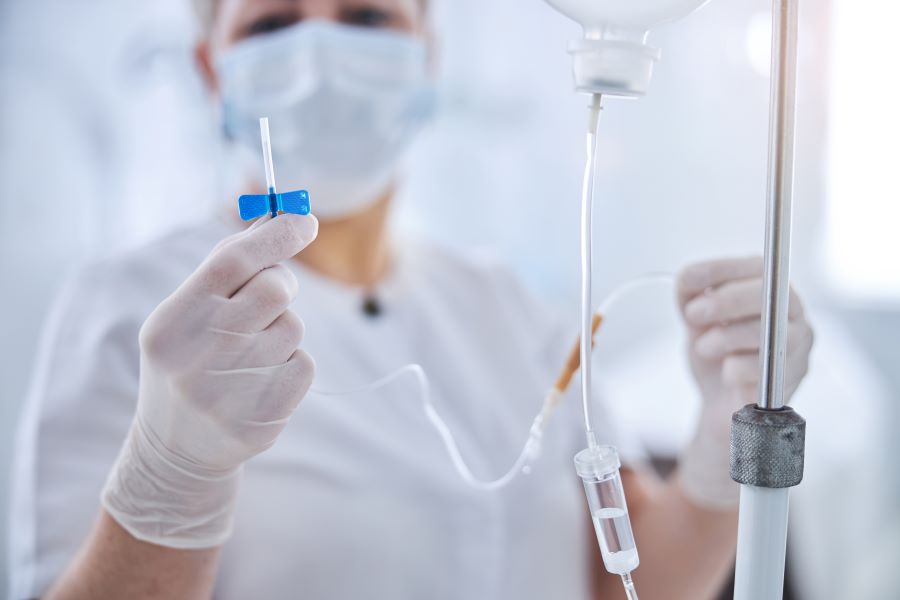Intravenous antibiotics helpful for PTLDS

Post Treatment Lyme Disease Syndrome (PTLDS) can develop in patients even after receiving antibiotic treatment for Lyme disease. Although the exact cause of PTLDS is unknown, it could be due to a persistent infection. PTLDS is characterized by fatigue, pain and cognitive difficulties.
In their study “Efficacy and safety of antibiotic therapy for post-Lyme disease? A systematic review and network meta-analysis,” Zhang and colleagues described a meta-analysis review of four Randomized Clinical Trials (RCT) addressing Post-Treatment Lyme Disease Syndrome.¹
The four randomized controlled trials included 485 subjects who met the following inclusion criteria:
- Randomized controlled trials
- Patients with Post-Lyme Disease Syndrome which has persisted for at least 6 months after treatment of the initial infection and who tested positive by IgG Western blot
- Patients aged 18 years and above
- Number of cases providing valid data to measure outcomes
- Studies that the control group used placebo, while the observation group took the antibiotic
Their meta-analysis showed that ceftriaxone had better results than placebo on FSS. “FSS-11 is the most widely used scale to measure the fatigue severity of the subjects,” wrote Zhang et al.
“Ceftriaxone treatment may be the best choice for antibiotic treatment of PTLD, which provides useful guidance for antibiotic treatment of PTLD in the future.”
The systemic meta-analysis concluded that intravenous ceftriaxone may be the best choice for treating Post-Treatment Lyme Disease Syndrome.
An NIH-sponsored clinical trial demonstrated that intravenous ceftriaxone therapy improved patients’ cognitive function in the short term, according to Fallon.² There were no trials addressing pain.
The authors were not able to show significant gains in the Beck Depression Inventory (BDI), Mental Health Scale and Physical Functioning Scales. Neither were they able to show significant gains with oral doxycycline.
Zhang et al. acknowledged several limitations to their study. “The number of RCTs is small; The duration and dose of treatment in these RCTs are not uniform; The follow-up time of various RCTs is different to some extent.”
Author’s Note: I have been reluctant to recognize the term PTLDS until there is a reliable test to exclude a persistent infection. This systemic meta-analysis validated my concerns that PTLDS may be the result of a persistent infection.
Related Articles:
Podcast: Post-Treatment Lyme Disease Syndrome Cases
4 Distinct Post-Treatment Lyme Disease Syndromes?
Number of Post-Treatment Lyme Disease Syndrome cases expected to soar
References:
- Zhang X, Jiang Y, Chen Y, et al. Efficacy and safety of antibiotic therapy for post-Lyme disease? A systematic review and network meta-analysis. BMC Infect Dis. Jan 12 2023;23(1):22. doi:10.1186/s12879-023-07989-4
- Fallon BA, Keilp JG, Corbera KM, et al. A randomized, placebo-controlled trial of repeated IV antibiotic therapy for Lyme encephalopathy. Neurology. Mar 25 2008;70(13):992-1003. doi:10.1212/01.WNL.0000284604.61160.2d




Bob
02/17/2024 (11:13 am)
Good afternoon Doctor.Hope all is fine. My IgG immunoblot test was positive for the next three antigens: Flagellin (p41), OspC (OspC), p83 (p83). IgM immunoblotting was borderline for: Flegellin Borrelia afzelii (p41), OspC Borrelia afzelii (OspC Ba); OspC Borrelia burgdorferi (OspC Bb), OSpC Borrelia garinii (OspC Bg). No any doctor said that it can be conisdered as Lyme 100% ,but also not declined a possibility. But i never seen a tick bite.
I was treated for 30 days by Doxy and joints pain has gone. However two month after i still have muscle twitching in the calves 24/7 non stop. And motor nerve involvement shown in EMG. Nerve conduction study has shown slight difference in signals but not critical.
Now i was suggested to make a second round of AB (after 2 month from previous treatment) ; Ceftriaxone 21d + oral Doxy. Does the Ceftriaxone injection to the muscles have same effect as IV ? Thank you.
Dr. Daniel Cameron
02/18/2024 (6:37 am)
I am not sure IM has the same benefit of IV. Moreover it is difficult to administer 2,000 mg of intravenous ceftriaxone as a IM treatment.
Mary Britton
11/01/2023 (1:37 pm)
Hi there and thanks much for your work. My question would concern the specific bacteria bartonella and the fact(?) that this microbe seems to only respond to the rif’s -rifampin and the other. Bartonella is such a prevalent (and very hard to eradicate) “co-infection” that it has been postulated it could be the “primary” infection.
Dr. Daniel Cameron
11/02/2023 (7:07 am)
Most of the research on treatment comes from Bartonella following cat scratch fever.
Lynn Cash
03/16/2023 (9:47 am)
I was on i.v. picc line for LD treatment after participating in LD vaccine clinical trials 1995-1996. I nearly died if it weren’t for Sam Donta! Study trial docs were condescending and in denial of my symptoms. After 4 mos on i.v. ceftriaxone I was so.. much better As was my 10 year old son.. born with Bartonella & suffered for years. 5th grade was my son best year! To see the before & after i.v. therapy results of Spec scans (brain) was nothing short of amazing!! I def wouldn’t be here if not for this treatment. Im just sorry not enough influential people LISTENED 28 years ago!!
Mary Britton
11/01/2023 (1:41 pm)
So sorry you had to go through this. And happy that your child is well. May I ask if he has sustained remission from bartonella? I did not know that ceftriaxone could hit bartonella.